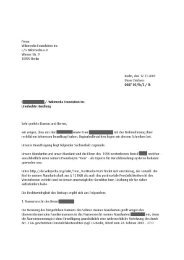Proceedings
Proceedings
Proceedings
Create successful ePaper yourself
Turn your PDF publications into a flip-book with our unique Google optimized e-Paper software.
IV. UQBT MODIFICATIONS<br />
A. Summary<br />
Among all the binary file formats supported by UQBT, the<br />
ELF format is handled most exhaustively. In case of PE file<br />
format (the default format for executables and libraries on<br />
Windows OS), significant enhancements had to be added in<br />
order to capture the semantics of the code. Some of them<br />
are related to peculiarities of the compiler; other are forced<br />
by CBMC properties. The most important code additions are<br />
enumerated below.<br />
B. Library functions<br />
Certain library functions (for example LocalAlloc ,<br />
wcslen ) are crucial in the assertion generation algorithm (described<br />
in the following section). As UQBT did not recognize<br />
the library function usage in PE files, appropriate support had<br />
to be added.<br />
In order to get the list of the imported functions, it is enough to<br />
locate in the PE file the data structure named ”import lookup<br />
table” and parse it (see [11]). For each library function F,<br />
in the address space of the Win32 process there exists a 32bit<br />
location (an import address table6 element) which is filled with<br />
the address of F by the library loader. The library function can<br />
be called in three different ways:<br />
1) Direct call of the address stored in IAT entry: call<br />
ds:iat entry<br />
2) Call to a ”thunk” function, which consists of a single<br />
jump instruction: jmp ds:iat entry<br />
3) Assignment to a register, then call register: mov<br />
ebx,ds:iat entry; call ebx This convention saves space<br />
when more that one call to the same library function is<br />
made subsequently.<br />
In the first two cases, it is easy to determine whether a given<br />
instruction is in fact a library function call: just check whether<br />
the argument to the ”call” or ”jmp” instruction is within import<br />
address table range. However, because of the third case, for<br />
each ”call register” instruction, we have to find the instruction<br />
X which assigns the register. The instruction X can be quite far<br />
away from the place where the actual function call takes place.<br />
Therefore, a reliable algorithm to trace back the execution flow<br />
had to be implemented; particularly, jumps and conditional<br />
jumps have to be back-traced.<br />
C. Calling conventions<br />
The calling convention describes how parameters and return<br />
values are arranged for a function call. In case of ia32 architecture,<br />
the most commonly used convention (named ”cdecl”)<br />
is:<br />
1) Parameters are passed on the stack<br />
2) Parameters are removed from the stack by the caller<br />
UQBT supports only the above convention. However, Win32<br />
binaries use the following conventions:<br />
| 18<br />
6 IAT for short<br />
Conv name Args passed... Who<br />
removes<br />
args<br />
cdecl on the stack caller<br />
stdcall on the stack callee<br />
thiscall first arg in register ecx, the rest callee<br />
on the stack<br />
fastcall first two args in ecx, edx, the callee<br />
rest on the stack<br />
”Fastcall” convention is used very rarely and can be<br />
ignored. ”Thiscall” convention is used for passing ”this”<br />
parameter to a class function; as currently we do not handle<br />
object code well for many other reasons7 , we choose to<br />
ignore it for now as well.<br />
This leaves us with the problem of distinguishing between<br />
cdecl and stdcall functions. The failure to do it properly results<br />
in incorrect view of the stack after the function has returned;<br />
it is particularly damaging when the analyzed procedure has<br />
not set a frame pointer.<br />
If a called function is implemented in the code we are<br />
analyzing, it is easy to find out its convention type: if the<br />
return from the function is implemented by a ret instruction,<br />
then it is a cdecl function; if retn N instruction is used, then<br />
it is a stdcall function, and its arguments occupy N bytes.<br />
However, in case of a library function, this method obviously<br />
does not work.<br />
The following solutions to the problem were considered:<br />
1) Retrieve the calling convention information from header<br />
.h files shipped in WINDDK. Disadvantage: many<br />
Win32 library functions are undocumented (in header<br />
files or anywhere else).<br />
2) Retrieve the calling convention from the debugging<br />
symbol file (.pdb). Imported functions honoring stdcall<br />
convention are represented as name@N, wherename<br />
is the function name, and N is the amount of space occupied<br />
by the arguments. Disadvantage: usually debugging<br />
symbols are not available (Windows OS binaries are an<br />
exception to this rule), so relying on them would limit<br />
the applications of the tool.<br />
3) Assume that functions imported from MSVCRT.DLL<br />
use cdecl convention, and other functions use stdcall.<br />
Detect exceptions to this rule by observing ”stack type<br />
assumption violated” error messages in the logs, and<br />
then manually annotate offending functions. Disadvantage:<br />
for each analyzed binary, a few functions must be<br />
manually annotated.<br />
The last option was chosen, as it provides maximum flexibility<br />
with acceptable manual labor overhead. Nontrivial amount<br />
of code was written in order to determine the amount of<br />
parameters passed to each call to library function, as well to<br />
fix the stack pointer after the stdcall function return.<br />
D. Function prologue and epilogue patterns<br />
UQBT assumed that instructions which constitute a function<br />
prologue (or epilogue) are not intermixed with other<br />
7 see the list of possible extensions in the last chapter






